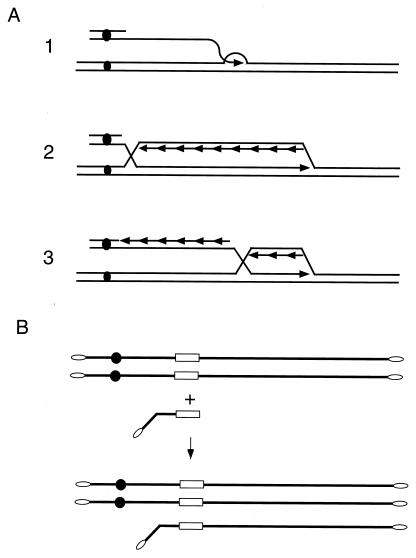FIG. 12.
BIR. (A) Three models to explain BIR. In model 1, the 3′ end of the DNA fragment (or broken chromosome) invades the template and initiates synthesis of one DNA strand by bubble migration. The complementary strand has to be synthesized later. In model 2, another (more likely) possibility is that the 3′ end initiates both leading- and lagging-strand synthesis, in a true replication fork. Here, DNA synthesis is semiconservative. The branched structure has then to be resolved by an endonuclease. In model 3, the initiation of a true replication fork is compatible with conservative DNA synthesis provided that branch migration follows the progression of the replication fork (bottom). Semiconservative replication is constrained to a small bubble. This hybrid model corresponds to the gene conversion model proposed in Fig. 8D. (B) One example of BIR. A DNA fragment with subtelomeric sequences, a centromere, and a terminal sequence homologous to a chromosomal region is transformed into yeast. The subtelomeric sequence can recombine with a chromosomal subtelomeric region to result in a true telomere (ellipse). This step is not shown. The other end of the DNA fragment can acquire all the sequences distal to the chromosomal homologous region, up to the telomere.

